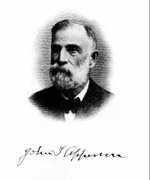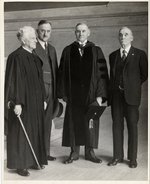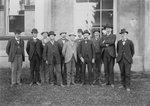What is a “regent” in higher education, you might ask and why is this related to me? Well, regents (or trustees) are organized into boards and serve as the governing bodies that oversee the administration of public higher education. Found in all 50 states, they are independent governing bodies that oversee each state's public colleges and universities. The people on a board of regents gain their authority from the state’s, constitutional provisions or codified statutes. States that create a board of regents through constitutional means grant these boards great political independence. These volunteers have many duties they must be able to plan long and short-term for the college and develop and articulate the vision and mission of the university system. They also play a role in hiring and overseeing the university chief executive. This board operates monthly and advises over general policy changes and additionally they lobby on the governor and legislature for money.
The initial Oregon State Board of Regents was created February 1885 by the Oregon Legislative Assembly. It replaced the College's Board of Trustees, which had reported to the Columbia Conference of the Methodist Episcopal Church, South. The Board of Regents consisted of nine members appointed by, and which reported to, the Governor of Oregon. It was twenty years before they appointed the first woman as a board member -- Mrs. Clara H. Waldo. This is much of how the board worked during the early history of Oregon State College. After Mrs. Waldo’s time there was a big change in the board structure. This new board was called The Oregon State Board of Higher Learning. The board was established in 1929 when the Oregon Legislature passed chapter 251, Oregon Laws 1929, which unified the state's public universities under the newly created Department of Higher Education. This centralized all the smaller boards into a nine person governmental board.
Important Board actions during Clara H. Waldo's tenure.
1907- Appointed William Jasper Kerr as president of Oregon Agricultural College
1908- Two-semester calender employed
1908- Institutional name of Oregon Agricultural College formally adopted
1909- Two dollar fee in addition to tuition accepted
1910- Approval of latin coursework requirement for graduation
1913- First millage tax for support of higher education in Oregon passed
1916- Student health service organized
1919- Three-term calendar restored




